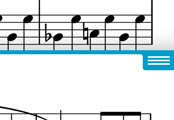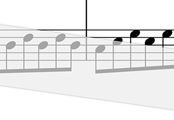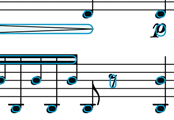Version 15.0.7
The current version of forScore is 15.0.7. If you're experiencing issues while using an older version, updating may help.Otherwise, the easiest way to fix intermittent issues is to quit and relaunch the app. Find out how here.
User Guides
For more in-depth information, check out our user guides.Additional Support
For personalized support, forScore Pro subscribers can contact us directly by opening forScore's Tools menu and choosing 'Support.'If you wish to submit feedback and do not need a response or if you have pre-purchase questions, click here to send us a message.
Please read our support policy here. We are generally unable to provide personalized support and replies are not guaranteed, especially for topics addressed on this page or in our user guide.
Working with Libraries
Moving scores between libraries
You can reassign scores to different libraries or designate multiple libraries for a particular score through the metadata panel:
- From the Libraries menu, tap All Libraries to select it. The panel should automatically close and return to the main score view
- Browse or filter the menus to identify the scores you’d like to move
- Open the Metadata panel by tapping the circled button to the right of any single item or by using edit mode to select multiple items and batch edit them
- Choose the Libraries tab and tap to select or deselect libraries in the list
- Close the metadata panel to save the changes.
Managing a score’s setlist and library membership
The “setlists” tab in the metadata panel lets you quickly manage which setlists the current score is a part of. Tap a setlist to add the current score to it (a blue check will appear) and tap it again to remove it. If you have multiple libraries set up, a similar “libraries” panel lets you manage library membership in the same manner.
Adding files to a specific Library
To import new scores to an existing library, use the following steps:
- From the Libraries menu, tap to select a library you’d like to use. The Libraries menu should close and return to the main score menu showing only the selected library.
- Add the files to your forScore library using your preferred method and they will be imported into the currently selected library by default.
If you’ve already added scores to forScore and would like to change which library or libraries they belong to, visit this page for more information.
Creating a new library
Use these steps to create a new library in forScore:
- Open the Scores menu to the root Categories view (tap the back button if necessary) and tap the Library button in the upper left corner
- Tap the + button to add a new library, then give the library a name
- If you’d like to reorder your libraries, tap “edit” and drag the three lines to the right of each item up or down
- Tap to select your new library and make it active, closing the Libraries list and returning you to the Scores menu
Any scores you add to forScore are automatically added to the current library, but since your new library is empty right now there won’t be much to look at. Return to the libraries list and select “All Libraries” to browse for the scores you’d like to use. In the metadata panel, choose the “libraries” tab and tap the name of your new library to place a check mark next to it. This works while batch editing, too, so you can add multiple scores to a library quickly and easily.
Removing libraries
If you no longer need a library, you can remove it by opening the Scores menu and tapping the back button until you see the Categories list (the list of composers, genres, tags, or labels). In the top left-hand corner, you’ll find the Library button—it may be called “Library” if no library is currently selected, otherwise it will show the name of the active library. Tap this button to see the complete list of libraries and swipe from right to left over the library you want to remove, then tap “delete” and confirm.
Note: removing a library does NOT delete its scores, bookmarks, or setlists—all of that content will still be visible whenever “All Libraries” is selected.
Moving setlists between libraries
With forScore 10 or later, use these instructions to manage a single setlist’s library membership:
- Open the main setlist menu and tap the circled “i” button next to the setlist you want to edit
- Tap to select a library from the list and a check mark will appear next to it
- The app will prompt you to move all associated files from that setlist to the corresponding library if applicable
- Tap the back arrow to return to the setlist menu
If you want to edit multiple setlists at once, or if you’re using forScore 9 or earlier, use these instructions:
- Open the main setlist menu and tap Edit in the upper right corner
- Tap to select one or more setlists, then tap the Edit option that appears at the top of the menu
- Tap to select a library from the list and a check mark will appear next to it
- The app will prompt you to move all associated files from that setlist to the corresponding library if applicable
- Tap the back arrow to return to the setlist menu


